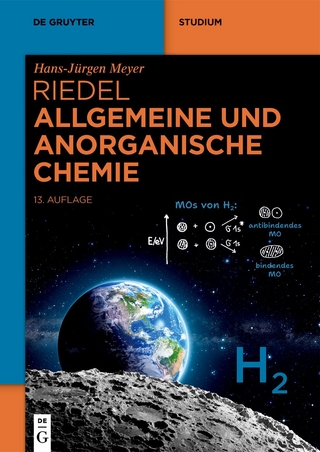Group Theory Applied to Chemistry
Seiten
Zu diesem Artikel existiert eine Nachauflage
Chemists are used to the operational definition of symmetry, which crystallographers introduced long before the advent of quantum mechanics. It gradually explains how bodily rotations and reflections, which leave all inter-particle distances unaltered, affect the study of molecular phenomena that depend only on these internal distances.
Chemists are used to the operational definition of symmetry, which crystallographers introduced long before the advent of quantum mechanics. The ball-and-stick models of molecules naturally exhibit the symmetrical properties of macroscopic objects. However, the practitioner of quantum chemistry and molecular modeling is not concerned with balls and sticks, but with subatomic particles: nuclei and electrons.
This textbook introduces the subtle metaphors which relate our macroscopic understanding of symmetry to the molecular world. It gradually explains how bodily rotations and reflections, which leave all inter-particle distances unaltered, affect the study of molecular phenomena that depend only on these internal distances. It helps readers to acquire the skills to make use of the mathematical tools of group theory for whatever chemical problems they are confronted with in the course of their own research.
Chemists are used to the operational definition of symmetry, which crystallographers introduced long before the advent of quantum mechanics. The ball-and-stick models of molecules naturally exhibit the symmetrical properties of macroscopic objects. However, the practitioner of quantum chemistry and molecular modeling is not concerned with balls and sticks, but with subatomic particles: nuclei and electrons.
This textbook introduces the subtle metaphors which relate our macroscopic understanding of symmetry to the molecular world. It gradually explains how bodily rotations and reflections, which leave all inter-particle distances unaltered, affect the study of molecular phenomena that depend only on these internal distances. It helps readers to acquire the skills to make use of the mathematical tools of group theory for whatever chemical problems they are confronted with in the course of their own research.
Operations.- Function spaces and matrices.- Groups.- Representations.- What has quantum chemistry got to do with it?.- Interactions.- Spherical symmetry and spins.
| Erscheint lt. Verlag | 16.9.2013 |
|---|---|
| Reihe/Serie | Theoretical Chemistry and Computational Modelling |
| Zusatzinfo | 11 Illustrations, color; 52 Illustrations, black and white; XIII, 269 p. 63 illus., 11 illus. in color. |
| Verlagsort | Dordrecht |
| Sprache | englisch |
| Maße | 155 x 235 mm |
| Themenwelt | Naturwissenschaften ► Chemie ► Anorganische Chemie |
| Naturwissenschaften ► Chemie ► Physikalische Chemie | |
| Naturwissenschaften ► Physik / Astronomie ► Festkörperphysik | |
| Technik ► Maschinenbau | |
| Schlagworte | Canonical Symmetry • Euclid Cubes • Functional Transforms • group theory • Molecular Orbital • Orthogonal Matrices • Rotation Matrices • symmetry • The Faraday Effect • Walsh Diagram |
| ISBN-10 | 94-007-6862-1 / 9400768621 |
| ISBN-13 | 978-94-007-6862-8 / 9789400768628 |
| Zustand | Neuware |
| Informationen gemäß Produktsicherheitsverordnung (GPSR) | |
| Haben Sie eine Frage zum Produkt? |
Mehr entdecken
aus dem Bereich
aus dem Bereich





